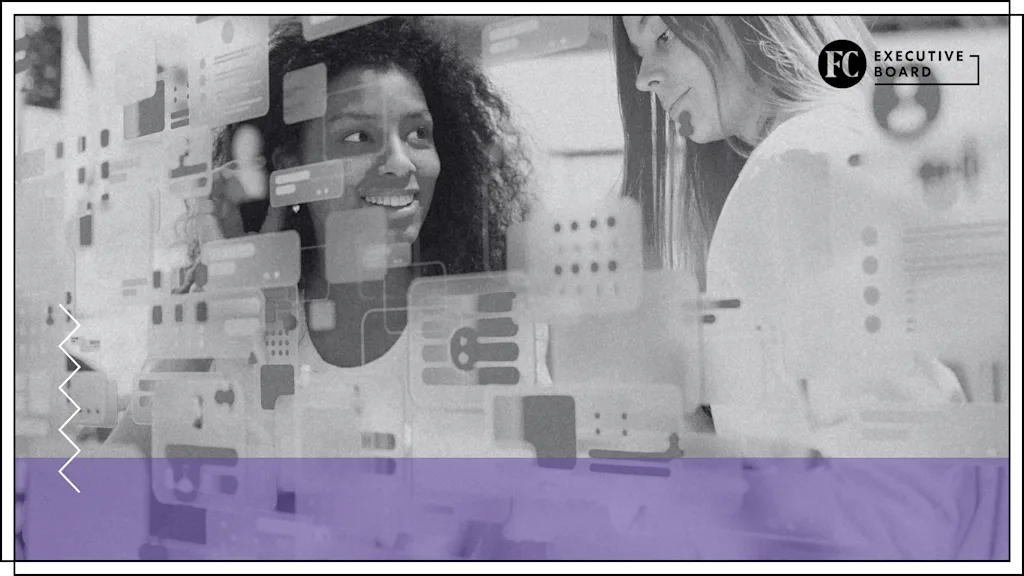Copyright Fast Company

Einstein didn’t develop the theory of relativity alone. When he had the breakthrough idea, he didn’t have the mathematical background to prove it. So he turned to his friend Marcel Grossmann, a mathematician who provided the geometric framework to build out Einstein’s vision. Later, he collaborated with physicists and astronomers to test and refine the theory. Now imagine if Einstein had ChatGPT. Today, any leader with vision can build that same kind of intellectual infrastructure. I’m already seeing the collaboration model work in industrial applications. But it remains an open question if industry at large will use it to amplify human potential or replace human thinking entirely. That’s our present fork in the road. History shows us the pattern, but more importantly, which AI strategies will likely succeed and which will likely fail. Subscribe to the Daily newsletter.Fast Company's trending stories delivered to you every day Privacy Policy | Fast Company Newsletters HISTORICAL PATTERN RECOGNITION The printing press in the 1500s let people have their own Bible and transfer knowledge directly. The church and kings opposed it because it threatened their control, but it also enabled propaganda. Then came steam engines and the industrial revolution: better farming, expanded trade, and the creation of new industries, but they also fueled colonialism and naval warfare. Electricity and combustion engines gave us airplanes and modern warfare. That technology powered Hitler’s war machine, but it also gave the United States unmatched industrial and military power, enabling it to rebuild Europe and Japan, launch the atomic age, and anchor a global order. Computers, once built in garages by the pioneers at Apple, reshaped how we work and create. The internet layered on top, connecting the world and unlocking opportunity, but also enabling identity theft, fraud, and manipulation at scale. What strikes me about these patterns is that humans in the loop are the guardrails. Again and again, technology has moved society for the good when it has amplified human vision. The printing press succeeded because people controlled what ideas to spread. Steam power worked when humans directed where to build. In short, each industrial revolution expanded human capability while introducing new risks. Now we’re in the fourth wave. MOORE’S LAW I watched Moore’s Law unfold in real time. In my 20s, I saw Intel processors go from the 8086 to the 186, 286, 386, and 486; they shrunk the power of what once filled a room onto a desktop. Each cycle seemed to double performance. Suddenly, you could run programs that had been impossible just a year earlier. And it didn’t slow down. How businesses handled the technical leap was revealing. Some companies planned for the curve, invested in infrastructure, and adapted quickly. Others waited, thinking they had time, and got left behind. The inflection point shifted entire industries. The adoption curve with AI is even faster, and so are the stakes. We are seeing the same pattern with large language models that we saw with processors—every iteration dramatically expands what’s possible. But companies are missing the point by treating AI like a plug-and-play replacement for people. The real skill is integrating it into human decision making so the exponential gains build on human judgment. Start with one workflow, and inject AI where decisions slow down, or where data gets ignored. Then pressure test the system. If the technology doesn’t make your people sharper, scrap it or rewire it. advertisement THE MODERN LABORATORY Our work in the mining industry is focused on bringing AI models into real environments. For example, radios translate in real time so I can speak Spanish while you respond in English, and the system bridges the gap. We’re also testing: Cameras that let a supervisor coach remotely or record procedures for training. Drones checking temperature and gas levels across a site and sending the data instantly. Wearables tracking oxygen, fatigue, and other health signals. Systems that can scan blueprints and recognize components automatically, catching errors humans miss. I call it convergence—biological, mechanical, and digital coming together through unified platforms. The value is safety, communication, and quality. And once you see it working, the applications keep multiplying. But there are pitfalls to avoid. I’m sure many of us have received emails that are obviously AI-generated. I have even seen some that start with “ChatGPT suggests you respond this way.” That’s not how I use it. I’ll draft something myself, then let AI refine the language, or fact-check. Instead of using it as a crutch, the tool only extends my thinking. Check in on how your team is using AI. Are they thinking through problems first, then using AI to test their reasoning? If they are prompting first, recalibrate. Make sure AI is sharpening their judgment, not replacing it. When we stop making decisions, we lose what makes breakthroughs possible in the first place. DIGITAL DREAMING The leaders who figure this out first are going to write the org charts of the future. Every business starts with somebody having a dream and building infrastructure to support it. Today, that infrastructure can include AI capabilities that would have seemed impossible even to Einstein, and beyond the wildest visions of Tesla. This is a remarkable time to be alive. We are watching leadership and human potential getting redefined right in front of us. AI’s true power is as a collaborative amplifier of human vision, not as a replacement for human thinking. We are still the ones with the dreams. Ed Macha is president and CEO at Reliable Controls.



